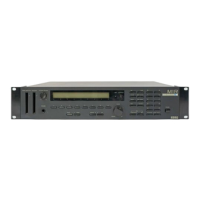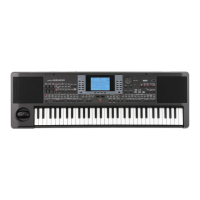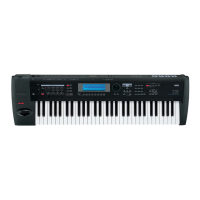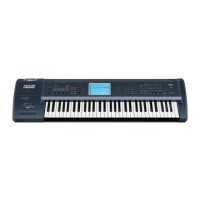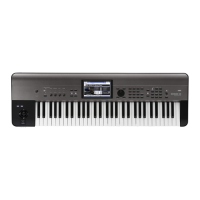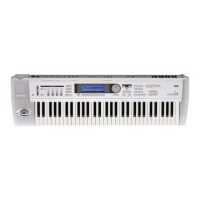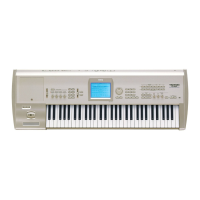Playing and editing Programs
60
Intensity to A and Intensity to B adjust the effect that
keyboard tracking will have on filters A and B. For
details, please see “3–1–2: Keyboard Track,” on page 49
of the Parameter Guide.
AMS Modulation
In addition to the EG, LFOs, and Key Track, you can
use two AMS sources to modulate the filters. For
instance, you could use the ribbon to change the
brightness.
Using the Amp section
The Amp section includes controls for volume, pan,
and the driver circuit.
You can control the volume using the Amp EG, LFO 1/
2, Key Track, and velocity, along with other AMS
sources.
Each Oscillator has its own Amp section: Amp1 for
OSC1, and Amp2 for OSC2.
Background - what does “Amp” mean?
Different sounds have characteristic shapes to their
volume levels.
For example, the volume of a piano note begins at a
high volume the instant you play the note, and then
decreases gradually.
The volume of an organ note, on the other hand,
remains constant as long as you continue pressing the
key.
The volume of a note on a violin or wind instrument
can be varied during the note by the musician (i.e., by
regulating the amount of pressure on the bow or the
force of the breath).
Pan
Pan
The main Pan parameter controls the stereo position
after the signal has passed through the oscillator, filter,
and amp.
Normally you’ll set this to C064, so that the sound is
centered equally between the left and right speakers.
To create a stereo effect when Oscillator Mode is set to
Double, set the Amp1/Driver 1 page Pan to L001, and
the Amp2/Driver2 page Pan R127. This will make
OSC1 go to the left speaker, and OSC2 go to the right
speaker.
With a setting of Random, the pan will change
randomly each time you play a note on M3, producing
an interesting effect.
Volume
Time
Piano
Volume decays gradually
Volume
Time
Organ
Volume remains constant
until note is released
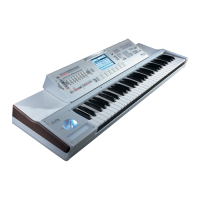
